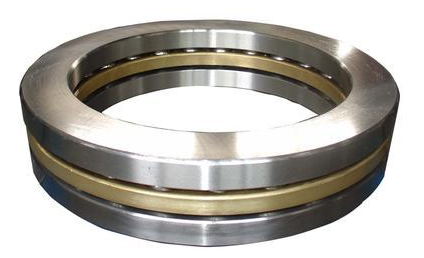Product FAQ
How to install thrust ball bearings
The fit between the thrust ball bearing and the shaft is generally a transition fit, and the fit between the seat ring and the bearing seat hole is generally a clearance fit. The center shaft ring of the two-way thrust ball bearing should be fixed on the shaft to prevent rotation relative to the shaft. The installation method of thrust ball bearings is generally when the shaft rotates. Therefore, the fit between the inner ring and the shaft is an over-win fit, and the fit between the bearing outer ring and the bearing chamber is a clearance fit.
When installing a thrust ball bearing, the verticality of the shaft ring and the shaft centerline should be checked. The method is to fix the dial indicator on the end face of the box shell, so that the contact head of the meter is on the raceway of the bearing shaft ring while rotating the bearing, while observing the dial indicator pointer. If the pointer is deflected, it means that the shaft ring and the center line of the shaft are not perpendicular. When the hole in the box shell is deep, an extended dial indicator can also be used for inspection. When a thrust ball bearing is installed correctly, its seat ring can automatically adapt to the rolling of the rolling elements to ensure that the rolling elements are located in the upper and lower raceways. If installed upside down, not only will the bearing not work properly, but also the mating surfaces will be severely worn. Since the difference between the shaft ring and the seat ring is not very obvious, extra care should be taken during assembly to avoid making mistakes. In addition, a gap of 0.2-0.5mm should be left between the seat ring of the thrust ball bearing and the bearing seat hole to compensate for errors caused by inaccurate parts processing and installation. When the center of the bearing ring deviates during operation, this gap will The gap ensures that it adjusts automatically and avoids contact friction, allowing it to function properly. Otherwise, severe damage to the bearing will occur.
Plane thrust ball bearings mainly bear axial load in the assembly and are widely used. Although the installation operation of thrust ball bearings is relatively simple, errors often occur during actual maintenance, that is, the tight ring and loose ring of the bearing are installed in incorrect positions, resulting in the bearing losing its function and the journal being worn quickly. The inner ring of the tight ring has a transitional fit with the journal. When the shaft rotates, the tight ring is driven and friction occurs with the end face of the stationary part. When an axial force (Fx) is applied, the friction torque will be greater than the inner diameter fit resistance torque, resulting in the tightening ring. The mating surfaces of the ring and the shaft are forced to rotate, aggravating journal wear.
Therefore, the following points should be paid attention to when installing thrust ball bearings.
(1) Distinguish between the tight ring and the loose ring of the bearing (judging based on the inner diameter of the bearing, the hole diameter differs by 0.1~0.5mm).
(2) Distinguish the static parts of the mechanism (that is, the parts that do not move, mainly the assembly).
(3) No matter what the situation, the loose ring of the bearing should always be against the end face of the stationary part.

Categories
News
Contact Us
Contact: YRT Rotary Table Bearing|Crossed Roller Bearing|Luoyang Hongyuan Bearing 【HONB】
Phone: 13653797636
Tel: 400-037-9586
E-mail: lyhyzc7@gmail.com
Add: Chuangye road, Konggang Industrial cluster district,Luoyang city, Henan province, China